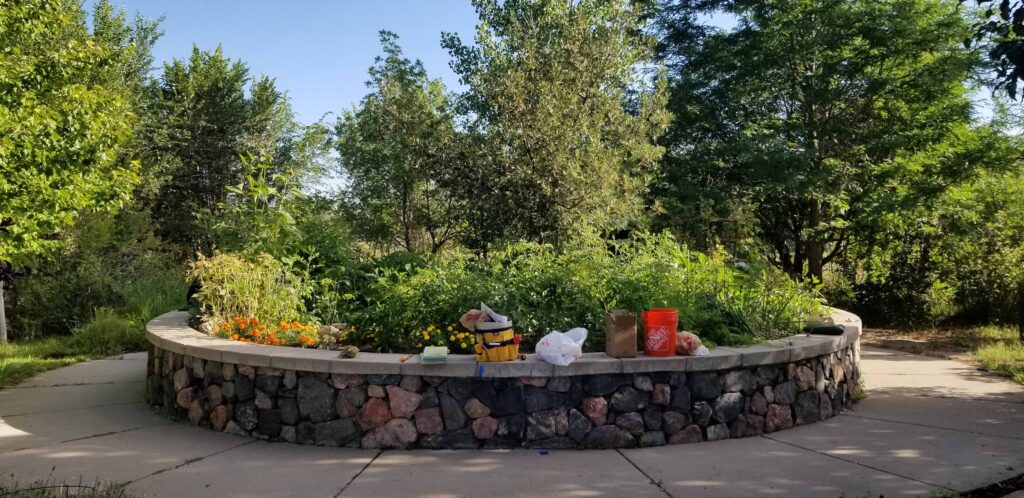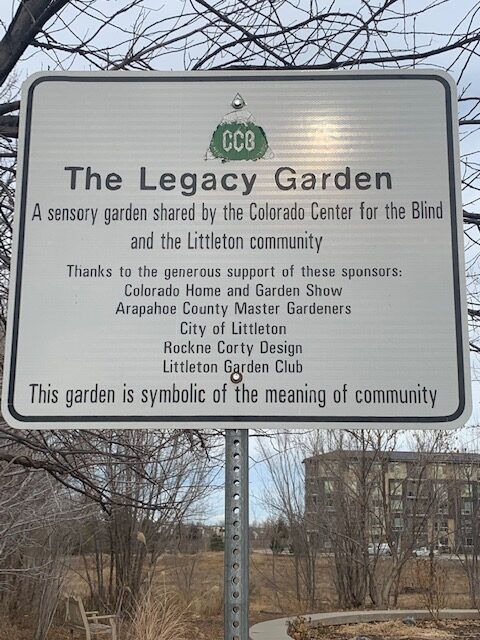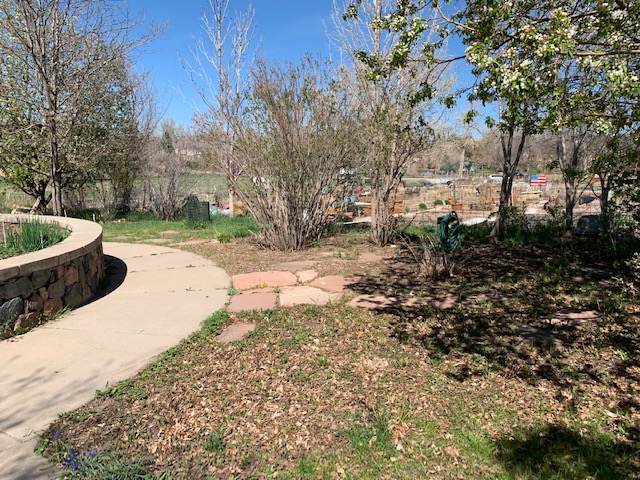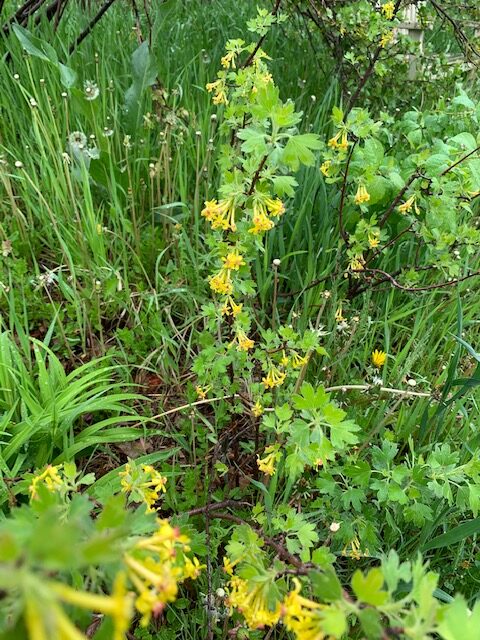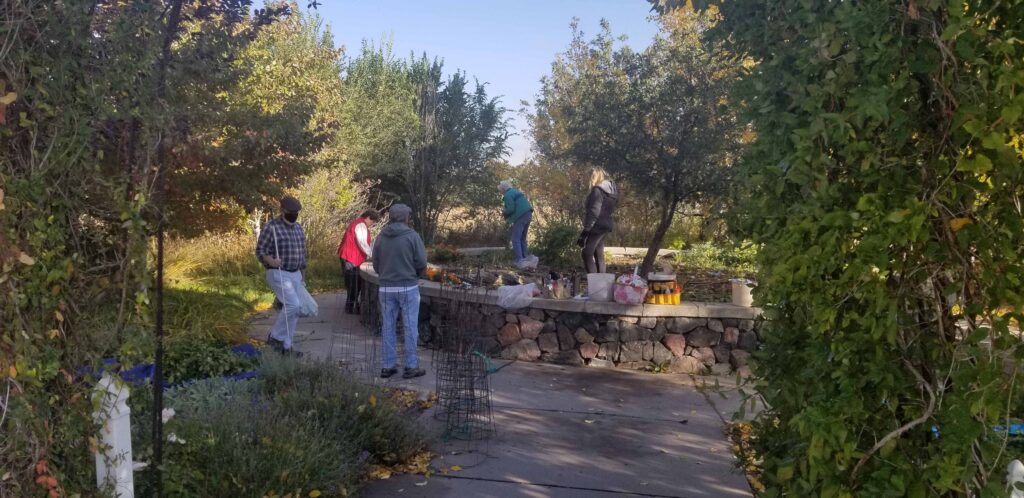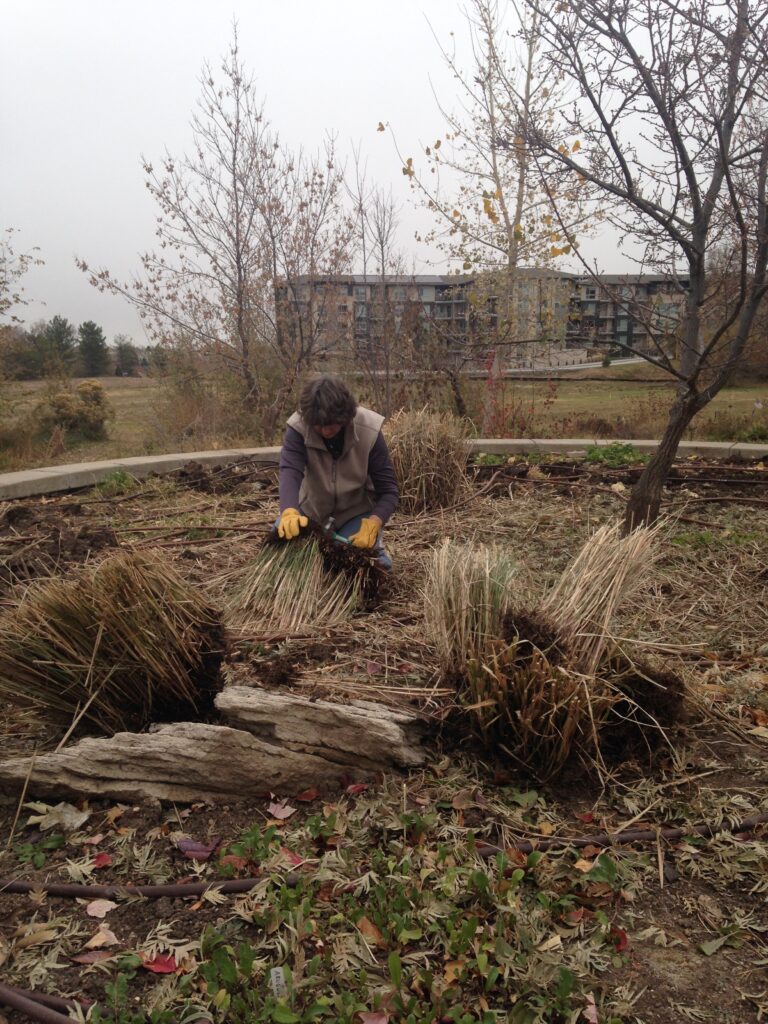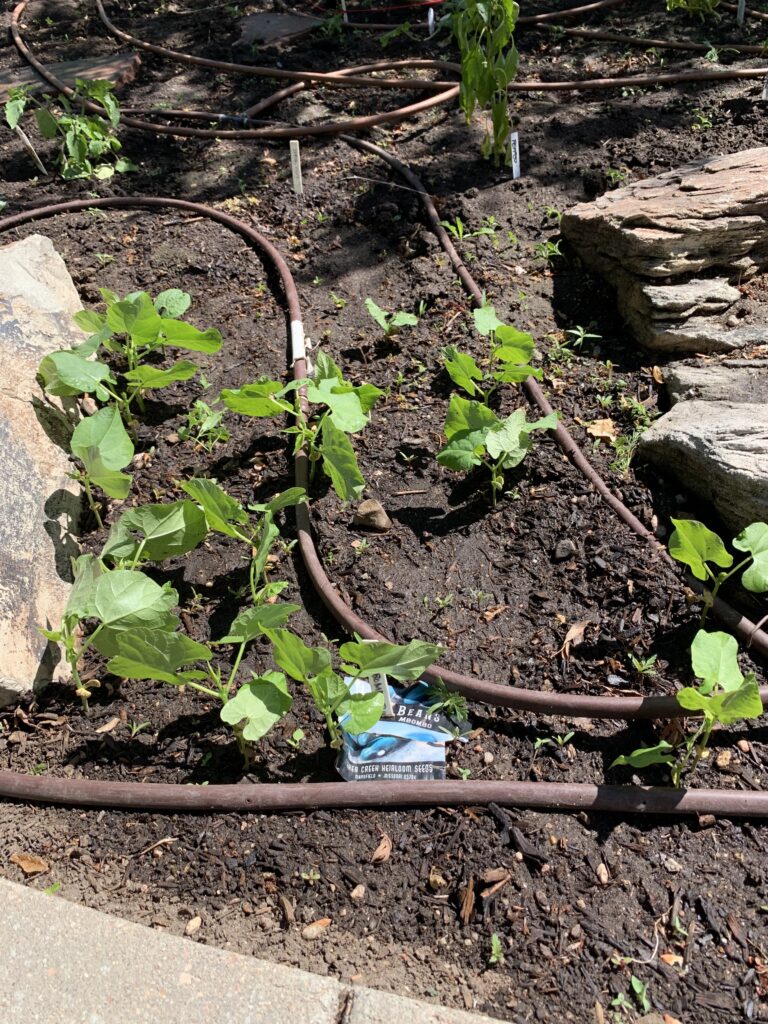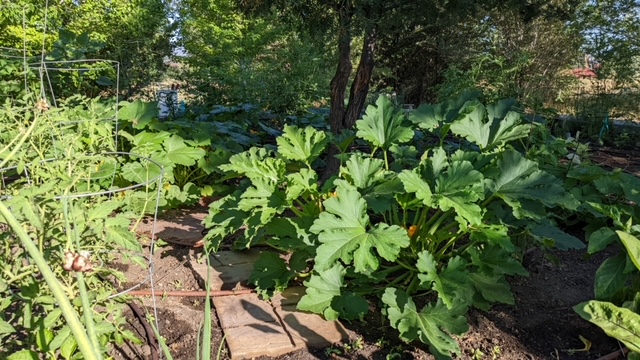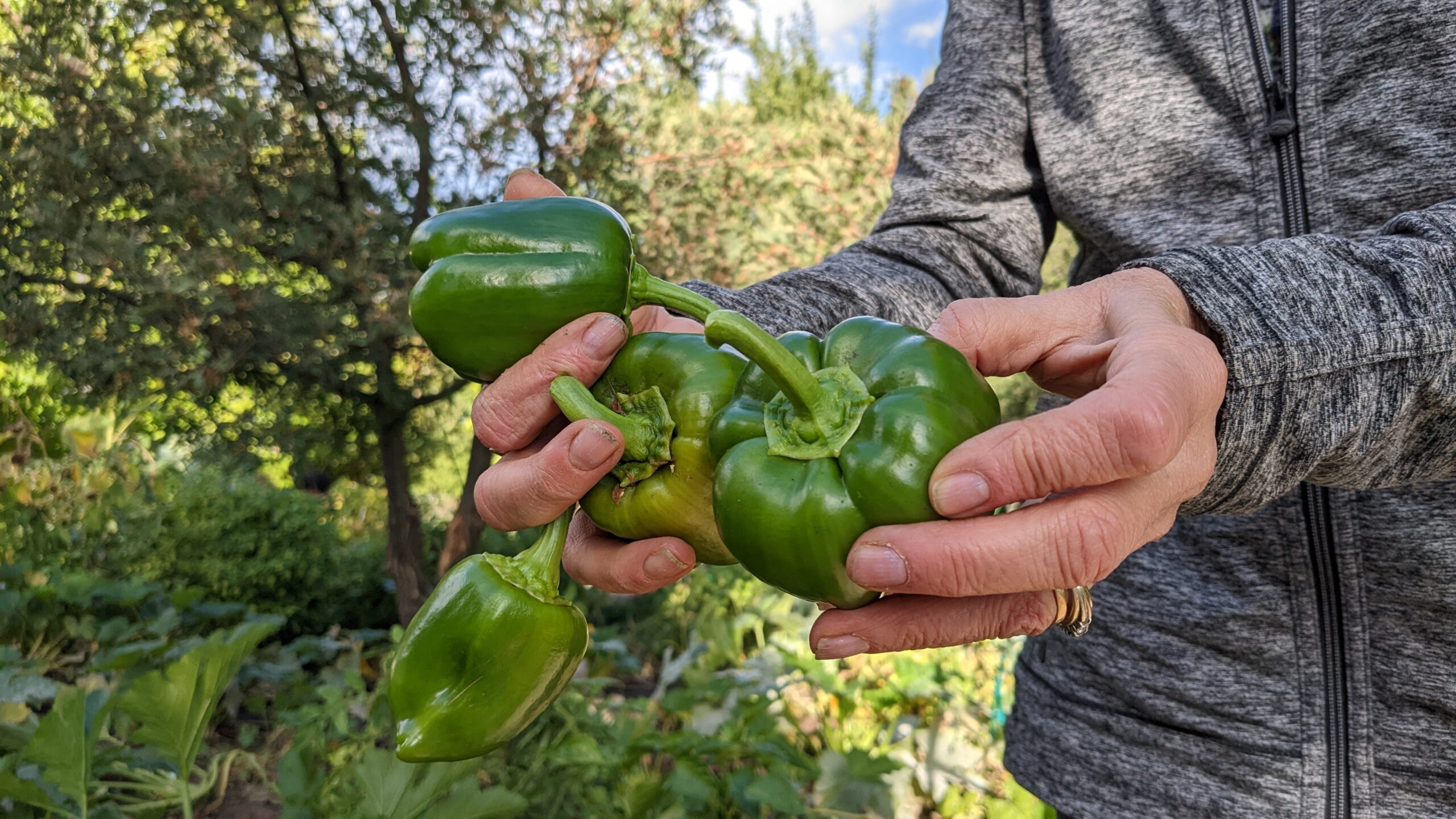Come visit the garden!
- Address: 2233 W Shepperd Ave, Littleton, CO 80120
- Master Gardener Hours: Tuesdays, 8:00-10:00 am May through October.
- Contact us: By Email or phone at 303-730-1920.
- Visit the Colorado School for the Blind website: www.cocenter.org
The Arapahoe County Master Gardeners partner with the Colorado School for the Blind helping students discover gardening. Affectionately known as CCB, this private organization believes blind people can do anything. They encourage and challenge each student to understand their own potential as they build skills and confidence to live the life they want, which includes gardening.
CCB’s Legacy Garden was built in the early 2000’s as a sensory garden with the support of the community. Original sponsors included the Colorado Home and Garden Show, Arapahoe County Master Gardeners, City of Littleton, Rockne Corty Design and the Littleton Garden Club. It is also a memorial garden honoring past members of the CCB blind community with memorial roses and a stone carving.
The garden was designed as a park-like setting surrounded with trees, lilac bushes, day lilies, roses, strawberries and other shrubs. In the center is a raised bed where students can easily access the soil to dig, plant, weed and grow vegetables, herbs and flowers from either plants or seeds. The Master Gardeners weekly engage students with the garden through taste, touch, and smell as students assist with the planting, weeding and harvesting of vegetables and herbs. The harvested bounty is then used by the students for their home management cooking classes.



Beginning in May, as weather permits, the Master Gardeners prepare the raised garden for spring flow planting – weeding, turning the soil, and spreading compost. The outside garden areas are also cleaned of winter debris. Seeds and plants are donated or purchased for planting. Planting begins as the weather warms. A drip irrigation system waters the garden.
As the spring warms, students start coming out to visit the garden. Some students have gardened previously where others are getting introduced to this new experience. Each student is partnered with a Master Gardener who orients the student to the “clock” circle layout as they walk about. The student enters the south end of the garden at 6:00. Moving to the right or left, the student is guided around the circle stopping at different points or hours on the clock where different plants are grown. Herbs are planted at the top of the circle between the 11:00 to 1:00 hours. The clock orientation guides students so they might come out on other days to enjoy the garden on their own. There is even a bench under a tree to sit on if they just want to be outside for a while.

The CCB students are a very relational group of people. They love to engage with the Master Gardeners and become more comfortable talking to us as they learn about gardening. The joy of watching a tentative person’s demeanor change as they walk around the raised bed circle becoming more relaxed, less fearful and more open to nature is the best reward a gardener can share with others. 
CCB instructors enjoying the sun in the garden 
Easy for students to touch, smell, taste 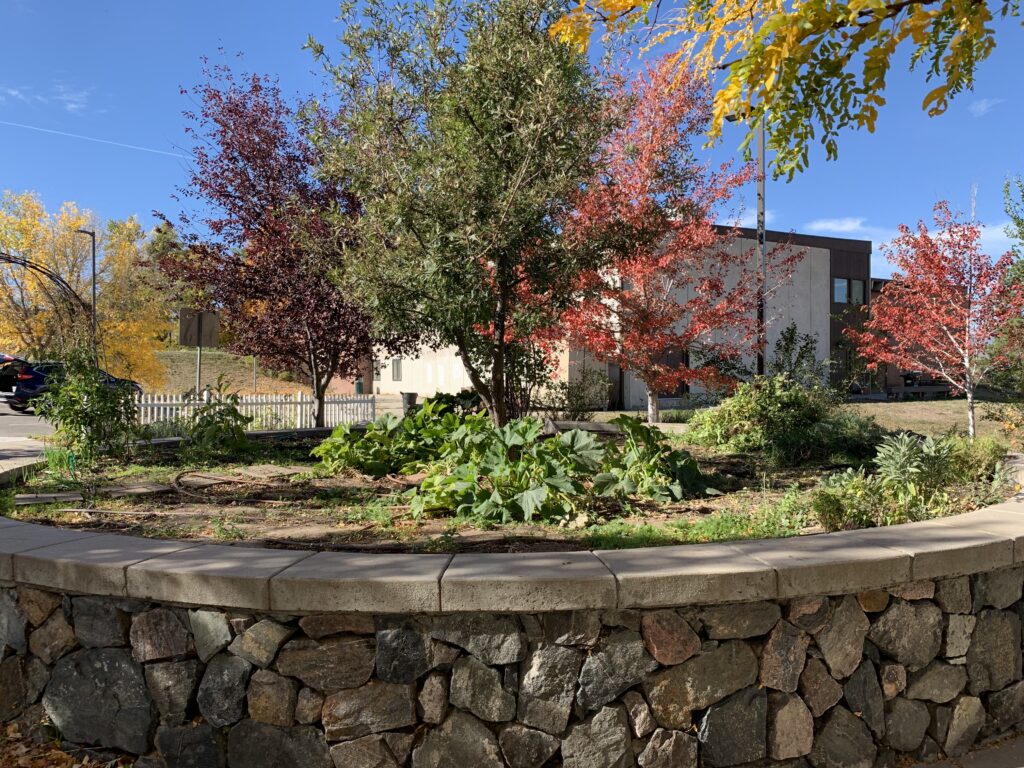
Fall before frost 
Student group, instructor and CMGs 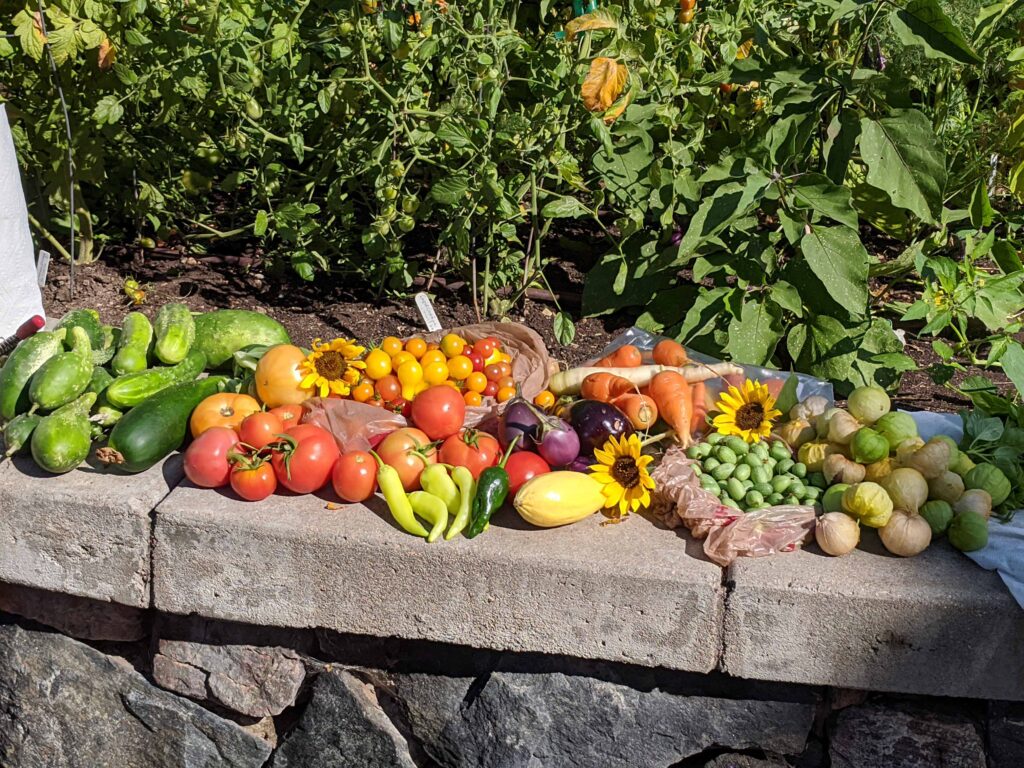
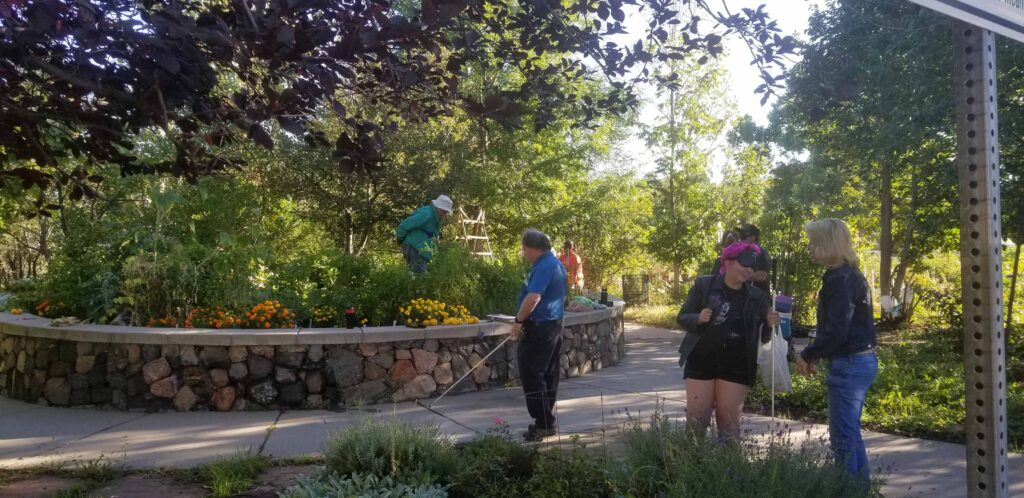
Fall greeting students 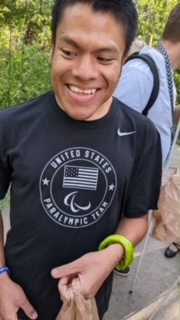
Student smiles
Every Tuesday, different groups of students come out to explore the garden. Since students can start their school program at different times throughout the year, students are discovering the garden at various times throughout the season. Returning students often know what vegetable or herb they are looking for because they have a certain recipe they are cooking in their classes. Sometimes the kitchen staff makes specific herb or vegetable requests for them to bring back to the kitchen.
The most common vegetables planted are tomatoes, spicy peppers, green beans, cucumbers, walking onions, garlic, zucchini, squash varieties, pumpkins, carrots, eggplant and sunflowers. Other plants tried include arugula, mesclan, swiss chard, brussels sprouts, bell peppers and okra. Depending on where the students are from, or how adventurous they are in their eating, not everything planted is familiar. Students also need to adjust to the less than perfect vegetables of the garden compared to what they usually find in the grocery store. Weather also affects the successful harvest.
As with any mature garden, maintenance of the outside areas is needed for the safety of students and the health of the garden. Trees and shrubs are pruned to allow for clear access to benches and sidewalks. Sucker trees are removed to open overgrown areas to light and air. Diseased plants are removed. Master Gardeners do these projects on alternate Thursdays without student assistance.
Challenges
Weather, deteriorating drip irrigation system, sunlight, heat, cold, rain, storms, wind, overcrowding in the garden, rotating crops, keeping everything easily accessible to the students.
Show and Tell
CCB Master Gardeners also have the benefit of learning new things from our lead leader on entomology, diseases, garden health, water issues and diagnostics.
This demonstration garden contributes to the CSU “Grow and Give” program, a larger hunger relief effort in Colorado. Once harvesting starts, students can take produce from the school plots home to share, while any excess may be donated to Integrated Family Community Services. Produce from the Colorado Master Gardeners’ plot is donated to Integrated Family Community Services.
Follow us on Facebook and Instagram.
Horticulture Resources
- Garden Buzz Archives
- CSU Extension Resources
- Colorado Master Gardener Program
- Foothills to Plains Native Plant Master Program
- Native Bee Watch Community Science Program
- The Co-Hort Blog
- PlantTalk Colorado
- Soil Testing
- Plant Select
- Emerald Ash Borer
- Japanese Beetle
- Colorado State Forest Service
- Ask an Expert


